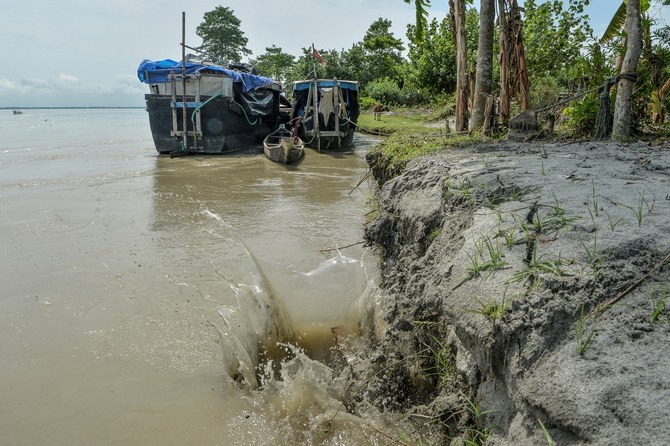Ranvir S. Nayar
One of the most damaging impacts of climate change is hardly visible to the naked eye, even though it is occurring more frequently and at a greater intensity each year. This damage is occurring in the ground below us, as rising seawater levels are leading to the erosion of land in various coastal regions, as well as to much higher soil salinity, rendering it infertile.
In addition to these two threats, coastal regions are being battered by extreme weather incidents like cyclones, which are becoming more frequent and more intense. Millions of farmers across the world whose lands are near the coast have been facing increasing damage to their farmland due to the triple threat posed by climate change and its aftermath.
A 2021 report by the UN Food and Agriculture Organization stated that more than 833 million hectares of land worldwide has been damaged by high levels of salinity; this is more than a 10th of the planet’s total farmland. This number is rising by as much as 10 percent each year, indicating the severity and rapidity of the spread of this problem around the world.
While rising sea levels were initially seen as a threat only to extremely low-lying areas, notably islands in the Pacific and Indian Oceans, over the last few years the damage has spread to vast tracts of land stretching from North America right across the globe to South and Southeast Asia.
In North America, the damage is mainly occurring in the northeast coastal area, where hundreds of acres of farmland are being lost every year because they are becoming too wet and salty to grow crops. This occurs as saltwater moves inland, mainly during storms, as high tides invade the coastal land. Another factor in driving the salinity of farmland is rising groundwater consumption; to fill in the empty spaces in the aquifers, subterranean saltwater starts to flow from the sea. Obviously, droughts, which are also increasing due to climate change, only act to enhance the seawater incursion into farmlands.
Their vulnerability stems from two main factors. One is the sheer number of people who rely on farming as their principal livelihood and means to provide for their families. Unlike the Western or developed economies, where farming employs less than 1 percent or 2 percent of the total population, in developing countries, especially large nations like India, Bangladesh, Indonesia or Nigeria, farmers and their families often account for as much as 60 percent of the population, taking the total number globally to well over 2 billion people.
The second factor relates to their financial situation. Unlike the average farmer in the developed world, who is relatively better off, most farmers in developing countries find themselves at or very near the absolute bottom of the economic heap, living well below the poverty line.
In such a situation, the developing world’s farmers are in no situation to be able to handle setbacks like crop failure due to drought or floods, let alone undertake the relatively expensive measures to prevent salination or treat it if it is already present on their lands.
As almost all of them are poor, seeking crop insurance cover is out of the question, assuming that insurance companies even offer proper coverage and reimburse farmers in the case of damage to their harvests. Similarly, while rich countries’ governments manage to find the funds to compensate farmers for crop losses, seeking government help remains out of reach for most farmers in the developing world.
The future does not look promising for farmers around the world, as carbon emissions have risen sharply since the end of the COVID-19 pandemic and do not show any signs of slower growth in the near term. This means they must brace for an even more severe impact on their farmlands and harvests. While some solutions do exist – or rather stop-gap arrangements that can at least slow down the incursion of saltwater – most of these are actions to be implemented at a regional level, rather than for each farm on its own. For instance, mangroves are a very effective barrier that curb soil erosions and prevent the incursion of saltwater, hence curbing the salinity of soil. But planting and protecting mangroves is beyond an individual farmer and can only be implemented by either groups of villages or ideally by national or regional governments that can muster the required resources. Similarly, governments can educate farmers about shifting their crop patterns by adding salt-resistant or hardy crops or through crop rotation. But these need large-scale education programs, as well as the availability of seeds and other raw materials.
So far, there have been few signs of governments taking the threat as seriously as the situation merits, leaving farmers to fend for themselves. However, sooner rather than later, governments are bound to wake up to the fact that the loss of harvests is not just a challenge for an individual farmer or even all farmers collectively, but for entire societies and countries, as it severely erodes food security. The sooner governments acknowledge this fact, the better it will be for all. The question is whether they will wake up in time.







